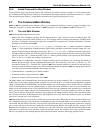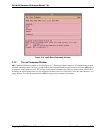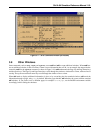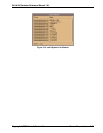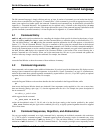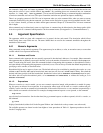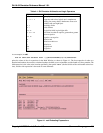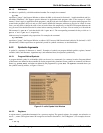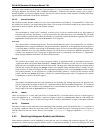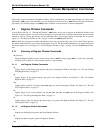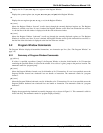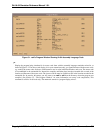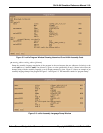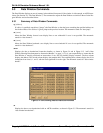
4-4 Command Language Copyright © 2000 Hewlett-Packard Co.
Ski IA-64 Simulator Reference Manual 1.0L
4.4.1.3 Addresses
An address is specified by a 64 bit hexadecimal number. For example, the command
pj 1000
repositions (“jumps”) the Program Window to address 0x1000. As discussed in Section 6.1, “Application-Mode and Sys-
tem-Mode Simulation”, Ski supports generic addresses in application-mode programs (that is, the concept of “virtual
memory” doesn’t apply to application mode programs), and physical and virtual addresses in system-mode programs. For
system-mode programs, the psr.dt and psr.it bits control whether Ski interprets addresses as physical or virtual. In some
cases, you may need to change the value of one or both of these bits temporarily, so that Ski will interpret addresses the
way you want. You should restore the bit values before resuming simulation, of course. You can set the psr.dt bit with the
Ski command “= psr.dt 1” and clear the bit with “= psr.dt 0”. The corresponding commands for the psr.it bit are “=
psr.it 1
” and “= psr.it 0”, respectively.
Addresses may be computed using expressions. For example, the command
dj 1000+0d50
repositions (“jumps”) the Program Window to address 1032, because 1000 (hexadecimal) added to 50 (decimal) is 1032
(hexadecimal). Address expressions are particularly useful in symbolic constructs, as described below.
4.4.2 Symbolic Arguments
A symbol is a sequence of characters (a “name”). Examples of symbols are program-defined symbols, registers, internal
variables, labels, and filenames. Arguments may (and sometimes must) be expressed symbolically.
4.4.2.1 Program-Defined Symbols
A program-defined symbol is an identifier which can be used as a mnemonic for a memory location. Program-defined
symbol names are defined in the executable file for the program being simulated. Some symbols are common, well-known
names (e.g. printf, main), and others are defined by the programmer (e.g. foo, bar). The symlist command shows you
the symbols sorted by address, as Figure 4-2 shows.
4.4.2.2 Registers
A register name is a predefined mnemonic for a processor register. The general registers, for example, are referred to as
r0, r1, ..., r127. (The register names Ski recognizes are listed in Section B.1, “IA-64 Registers”.) For example, the com-
mand
= r31 ip
Figure 4-2.
xski
’s Symbol List Window



